Ficus Melanie, care, methods of reproduction, signs associated with ficus
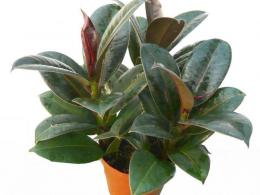
An unpretentious and widespread plant native to Indonesia, ficus Melanie, whose care does not require much effort, will decorate any interior.
The small tree has managed to win the hearts of many gardeners precisely because of its unpretentiousness and aesthetics.
Content:
- Description of the plant
- How tall does Ficus Melanie reach?
- Ficus Melanie: home care
- Ficus Melanie, reproduction features, propagation by cuttings
- Trimming
- Common diseases of Ficus Melanie
- What signs are associated with ficus Melanie
Description of the plant
Melanie refers to rubber ficus, differs from its relatives in appearance. This is not a tree, but rather a shrub, which has the advantage of having a compact crown and can easily tolerate pruning. Its small size allows you to place the bush not only on the floor, in specially designated areas, but also on the windowsill.
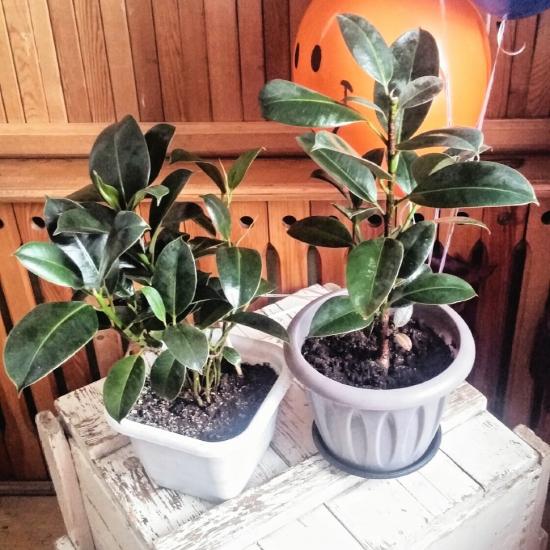
Other features include:
- The direction of growth of the branches is not upward, like that of its relatives, but to the sides, which determined its similarity to a bush;
- The leaves are dense in structure, elongated with a sharp tip, which is slightly curved downwards. They can reach fifteen centimeters in length and seven in width;
- The outer side of the leaf is glossy, rich green, sometimes the shade can be darker. The inner part is lighter, matte and distinguished by the presence of red veins;
- The distance between the cuttings of each subsequent leaf is on average several centimeters;
- In indoor conditions it blooms very rarely. In the wild, you can see rather unremarkable flowers of pale shades, which are pollinated only by certain types of insects.
Melanie is a fruit-bearing plant, but has no nutritional value for humans. The fruits are small, no more than a centimeter in diameter and resemble tiny figs in appearance.
This rather remarkable plant is not demanding; even a novice gardener can take care of it.
Abundant branching opens up wide spaces for the imagination of lovers of original crowns.
How tall does Ficus Melanie reach?
Like many other plants, in the wild it can reach a height of thirty meters. At the same time, the ficus ceases to be just a “tree”; it is already a real tree, which with age begins to form aerial roots.
In the plant’s homeland, these aerial roots, which are particularly dense, are used to build suspension bridges that are not only capable of supporting the weight of fifty people, but are also constantly renewed naturally and do not need to be replaced.
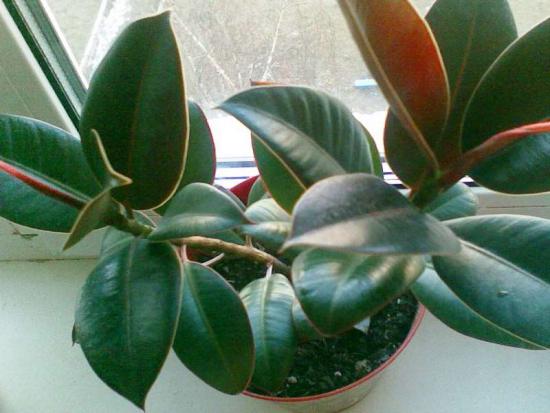
Melanie does not reach such huge sizes in indoor conditions.
The height varies from fifty centimeters to a meter, depending on the conditions of care, the frequency of pruning, and the conditions in which the tree grows.
Ficus Melanie: home care
As already mentioned, the plant is not particularly whimsical. However, it is not recommended to treat this too carelessly. Caring for Melanie comes down to regular watering, systematic application of fertilizers, annual pruning and replanting.
In addition, it is recommended to follow some rules:
- The frequency of watering should be adjusted depending on the level of humidity and temperature in the room, time of year, lighting and characteristics of the substrate. It is recommended to be guided by the state of the latter. The plant needs watering when the soil is completely dry or slightly damp. It’s quite simple to check this, just stick your finger into the pot and if there is still stuck soil on it, water it early. If the soil turns out to be too dry, crumbly, or, on the contrary, hardened, it’s time to moisten it. In summer, it is recommended to add water several times so that it begins to accumulate on the tray. After it has drained after half an hour, you should drain the excess. In winter, watering should be moderate; excessive amounts of moisture at low temperatures can destroy the tree;
- Along with watering, it is important not to forget about the need to systematically spray the leaves. It should be done when the air is dry during winter heating and summer heat. In this case, you should use only water at room temperature, which has been allowed to settle;
- It is recommended to apply fertilizer twice a month in summer and once in winter. It is important to take into account that fertilizing should be done on the day when the plant was watered, or on the next day, so that the soil is moist. It is recommended to choose liquid fertilizers and not apply fertilizers within a month from the moment the tree is transplanted. If you neglect this rule, there is a danger of damaging the roots, since there are enough useful compounds in fresh soil and without fertilizers. Their excess can negatively affect the well-being of the plant.
Systematic watering and regular fertilization are the key to rapid growth.Following simple care rules will not take much time, but will ensure results.
Let's watch a video about proper care of ficus Melanie at home:
Ficus Melanie, reproduction features, propagation by cuttings
There are two options for propagating a tree.
Depending on personal preferences, you can choose to plant by cuttings - for this it is recommended to cut off a sufficiently strong apical or lateral shoot so that at least three leaves remain on it.
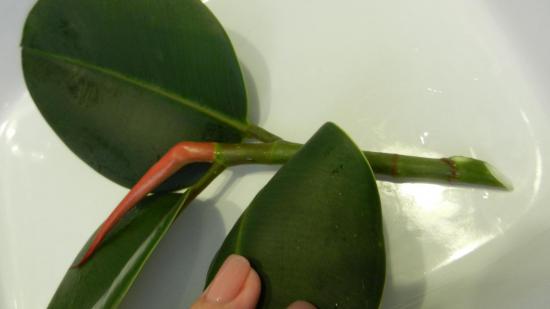
There is no need to sprinkle the cutting areas with charcoal; it is recommended to immediately place the cuttings in water to drain excess juice. The next day, the water needs to be changed and the jar with the cuttings covered with polyethylene to simulate greenhouse conditions.
To speed up the process of root growth, you can add a growth stimulator to the water. After the formation of the first roots, the cuttings need to be transplanted into a pot with substrate.
Planting by air layering - this method is not suitable for beginners; in order for planting to be successful, you need certain gardening skills.
To begin with, it is recommended to cut the stem by a third, so that the cut comes out oblique, insert a match into the cut site, which will prevent the cut from growing together. Wrap peat and a bag over the top, wait until the roots form, after they appear, cut the seedling just below the cut line and plant it in the prepared substrate.
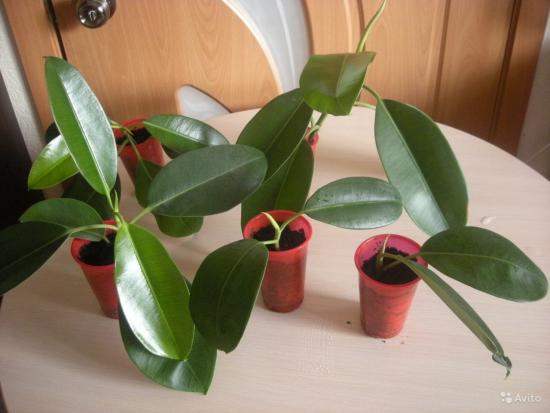
When choosing a planting method, it is important to consider how skilled the gardener is at the task. To begin with, you shouldn’t take risks; it’s better to plant ficus cuttings.
Trimming
It is recommended to carry out formative pruning in February or March. When pruning, it is important not to cut the top of the branches below the five internodes.This is quite enough for the bush to activate tillering and acquire a more lush and voluminous appearance.
When pruning, it is important to consider that ficus is a poisonous species. If its juice gets on open skin, burns may develop, so pruning should only be done with gloves.
Systematic pruning will allow you to form a beautiful crown and maintain its condition without much difficulty.
Common diseases of Ficus Melanie
Despite the fact that ficus plants are quite undemanding plants, like many other indoor beauties, they can also get sick or suffer from attacks by harmful insects.
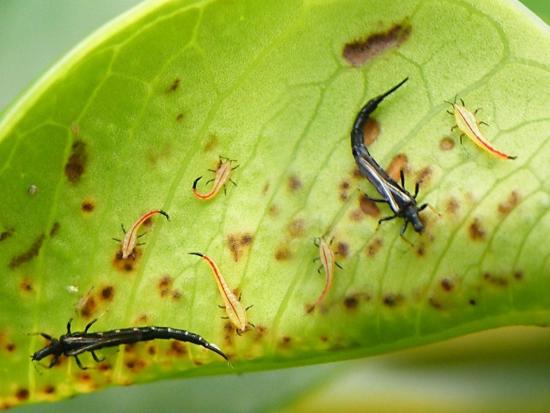
The most common diseases include:
- The formation of brown spots on the foliage is a direct indication of an excess of nutrients or sunburn;
- Leaf fall that develops as a result of insufficient watering or lighting. Temperature fluctuations and a draft in the room can lead to this. To eliminate the problem, it is recommended to eliminate the irritating factor;
- Yellowing of leaves is the first signal of improper care. One of the reasons is considered to be an excess of fertilizers; to correct this problem, it is recommended to increase the frequency of watering and not fertilize for several months. Another reason may be increased salinity of the substrate or root rotting. The latter is caused by an abundance of moisture; to correct the problem, you need to remove the damaged areas. Another reason for yellowness is a pot that is too wide - just transplant the ficus into a smaller container and the problem will be solved;
- Growth inhibition, which develops with too small a container, lack of light and fertilizer.
Another problem Melanie suffers from is parasites.Improper care or purchasing a new plant for the collection can negatively affect the condition of the flower.
The main parasites that Melanie suffers from include the following.
| Shields | Small insects that feed on sap, biting through stems and leaves. As a result, the plant withers, dries out and may even die. To get rid of parasites, it is recommended to wipe the leaves with soapy water. If this does not help, use a special drug like Actellik. |
| Spider mite | You can find out what he attacked by the characteristic cobwebs. The cause of damage to a tree by this parasite is usually too dry air in the room. To get rid of it, it is recommended to increase the frequency of spraying and wipe the leaves with a damp cloth from time to time. |
| Thrips | When affected by these parasites, the first thing you need to do is remove the affected plants from the rest to reduce the risk of the insects spreading. Wash the affected trees in the shower and transplant them into a new container, after thoroughly washing the pot with soap. |
Failure to follow the rules of care, lack or, on the contrary, excess of watering and fertilizing negatively affect the condition of the plant and this is important to take into account. If the tree is still damaged, do not panic; at the initial stage, everything can be corrected.
What signs are associated with ficus Melanie
There are many signs associated with ficus trees. There are good and bad, but the former predominate.
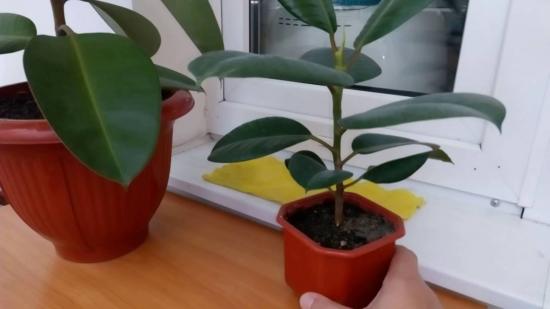
These include:
- Ficus in the house can improve a person’s emotional state and calm him down;
- Like Crassula, this tree is capable of attracting financial energy;
- For people who suffer from unclear speech - Melanie is the best helper;
- If you are actively searching for your soulmate, be sure to put this tree on your window.
In addition to the fact that this flower carries light energy, it is particularly aesthetically pleasing and can decorate any room.
Ficus Melanie is distinguished by its unpretentiousness and endurance. If you follow the rules of care, it will not bring much trouble and will delight you with fresh foliage for a long time.
Even more useful tips for caring for a plant are in the video:

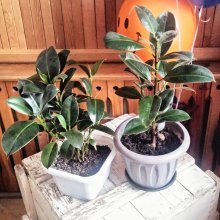
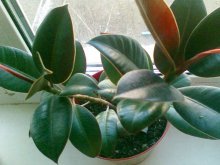

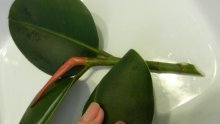


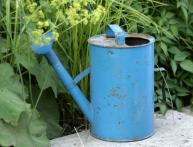

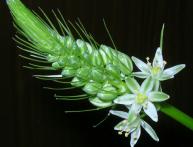





Comments
This is exactly the kind of ficus that grows in our house, I will say right away that it grows very slowly. Once a week we spray it with water so that it is not dusty and does not harbor parasites like spider mites.
You have to be careful with ficus, its juice is indeed poisonous, and you can be allergic to everything from it. My neighbor almost suffocated when she spent some time in the cramped kitchen next to him. Her eyes began to water, she began to cough, to breathe convulsively - horror, but she went to her home and soon felt better.
I love the look of the thick, succulent leaves of the ficus melanie plant. This plant breathes health. It is easy to care for; it is easy to wipe its leaves from dust. It pleases with its bright greenery, especially in winter.